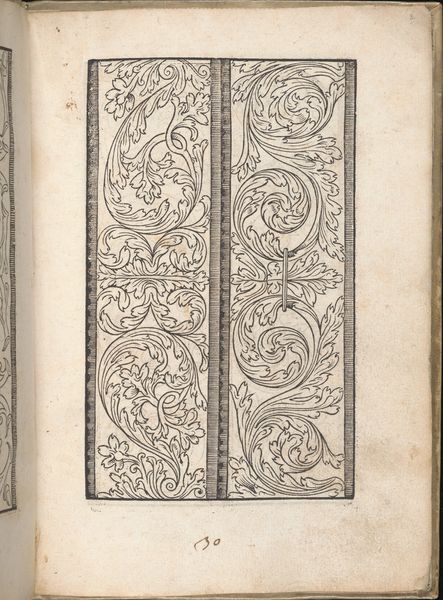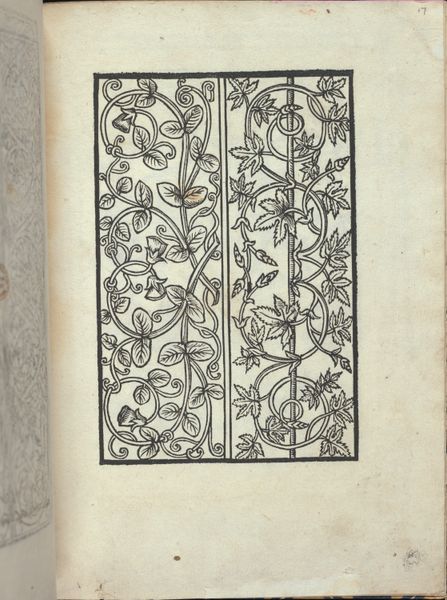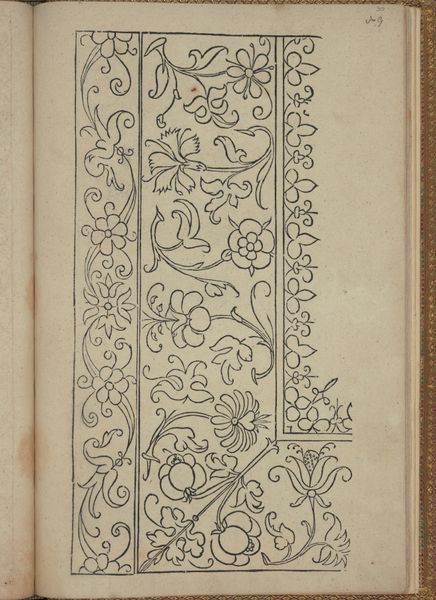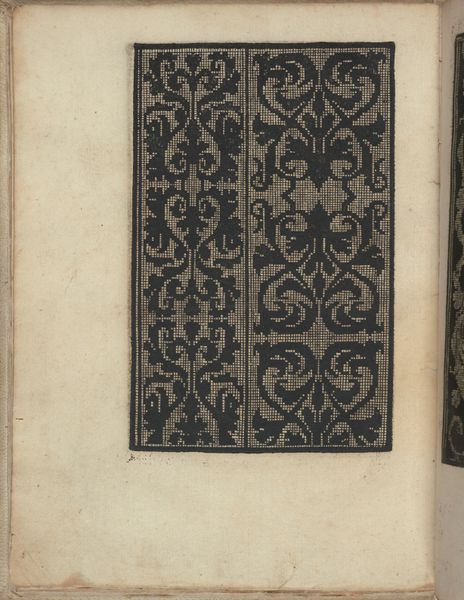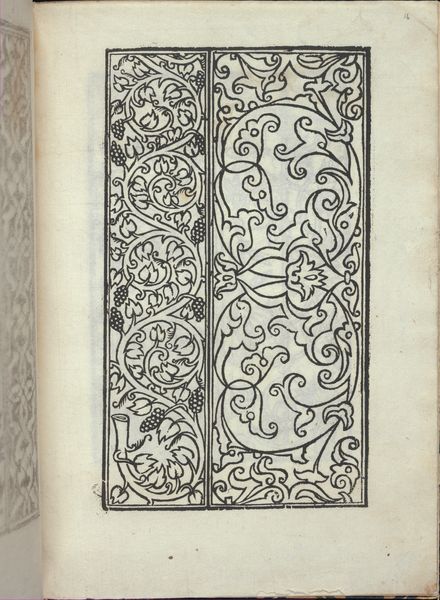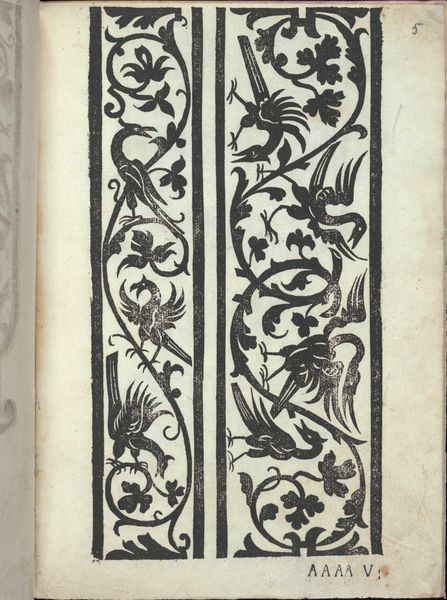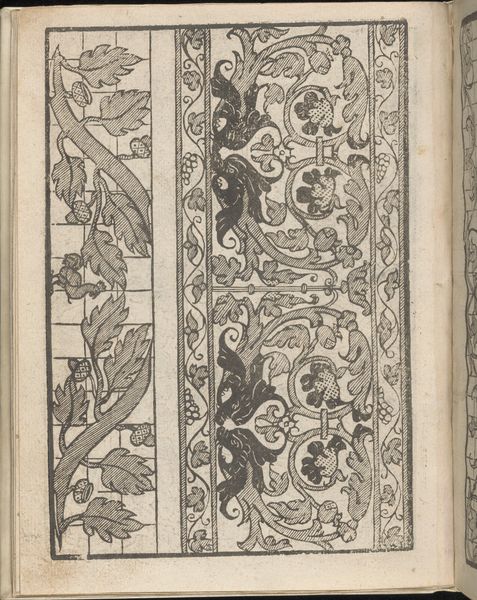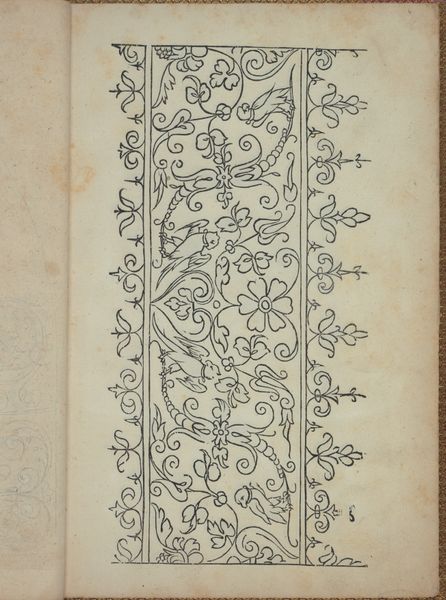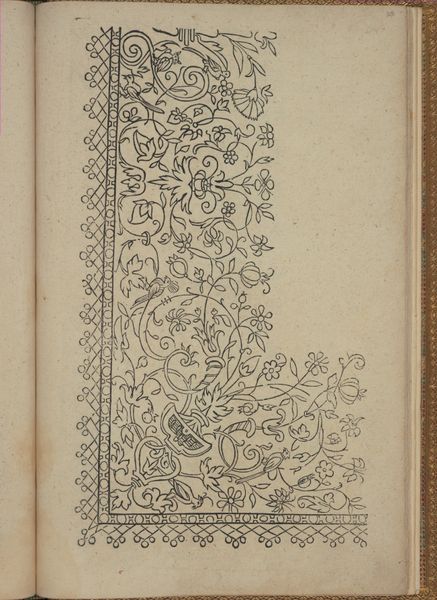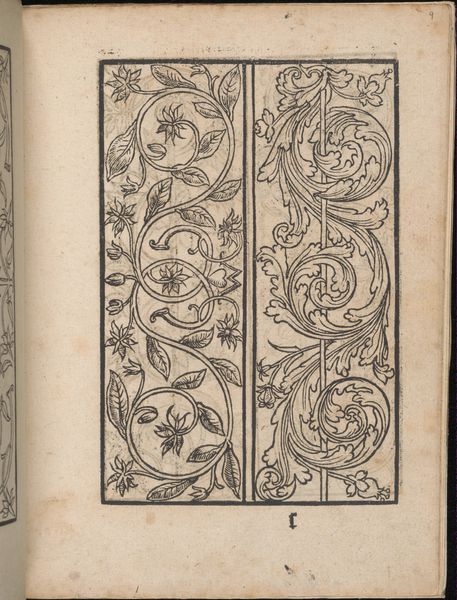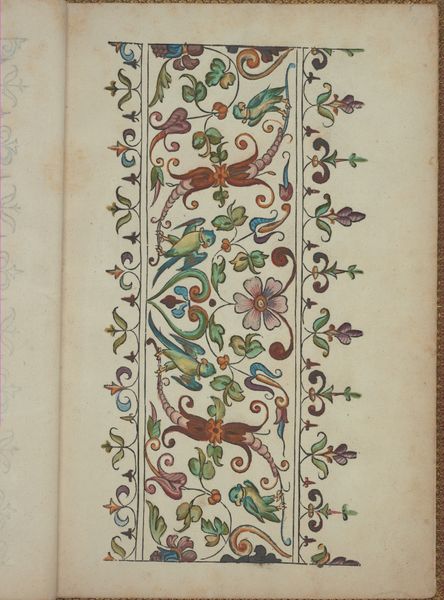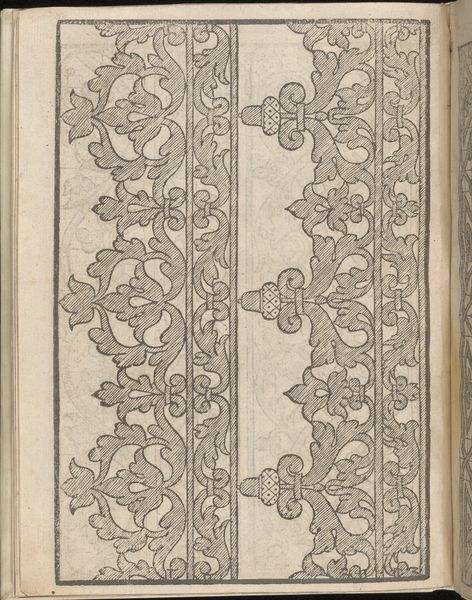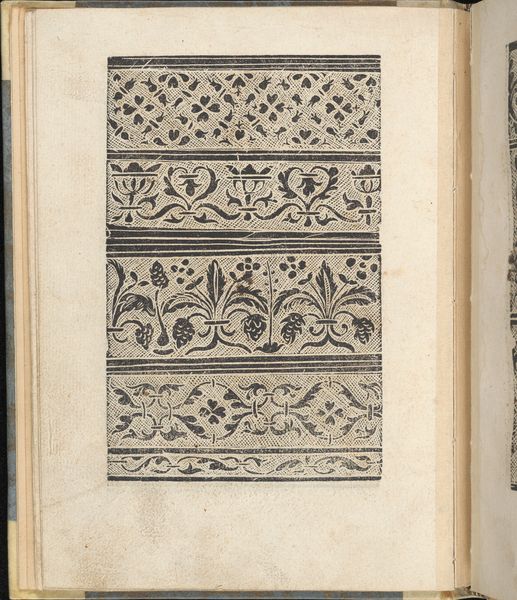
Libro quarto. De rechami per elquale se impara in diuersi modi lordine e il modo de recamare...Opera noua, page 18 (recto) 1532
0:00
0:00
drawing, print, woodcut
#
drawing
#
ink paper printed
# print
#
book
#
11_renaissance
#
geometric
#
woodcut
#
decorative-art
#
italian-renaissance
Dimensions: Overall: 8 3/8 x 5 7/8 x 3/16 in. (21.2 x 14.9 x 0.5 cm)
Copyright: Public Domain
Editor: Here we have a page from Alessandro Paganino's *Libro quarto. De rechami per elquale se impara in diuersi modi lordine e il modo de recamare...Opera noua*, printed in 1532. It's a detailed woodcut print, and looking at these symmetrical vines, it makes me think about how nature can be both wild and incredibly ordered. What's your take on this image? Curator: It’s fascinating how something so practical, a book of embroidery patterns, could also be such a beautiful object in itself! This isn't just about craft, it's about bringing the garden indoors. Notice the crisp lines, the contrast between the black ink and the creaminess of the paper – it almost feels tactile, doesn't it? Like you could reach out and trace the path of the vines with your finger. Do you see how each element feels meticulously placed, but also organic? It's like a dance between precision and spontaneity, an echo of the natural world stylized through the artist's vision. I'm curious: Does the repetition in the patterns suggest anything to you? Editor: I guess it shows how important standardization was, even back then. It's a way of teaching and distributing designs widely. Also, it wasn’t intended as a standalone image, right? It’s part of a larger book. Curator: Exactly! And remember, the Italian Renaissance was obsessed with classical forms and ideal proportions. These patterns reflect that sensibility. Each twisting vine and carefully placed leaf, while inspired by nature, adheres to a certain harmony and balance. It was about finding beauty in order. It makes you wonder about the hands that actually stitched these designs into fabric, doesn’t it? To think of their artistry, giving color and dimension to these simple lines… It’s like the pattern itself is a portal through time. Editor: It's funny how a seemingly simple design for embroidery can open up a whole world of thoughts about nature, craft, and history! Curator: Agreed! Every artwork whispers its stories, waiting for us to listen closely.
Comments
No comments
Be the first to comment and join the conversation on the ultimate creative platform.
